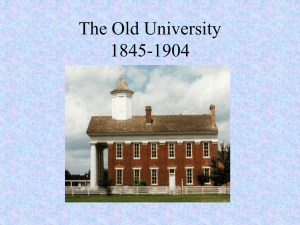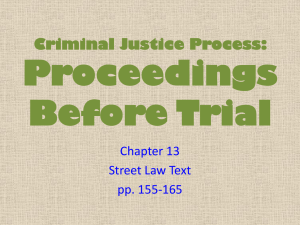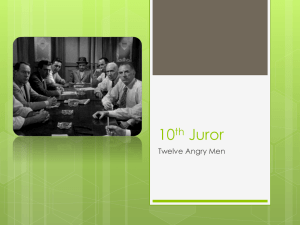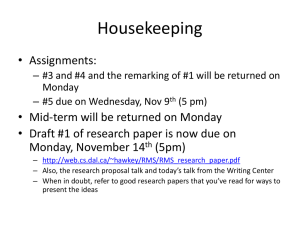File
advertisement
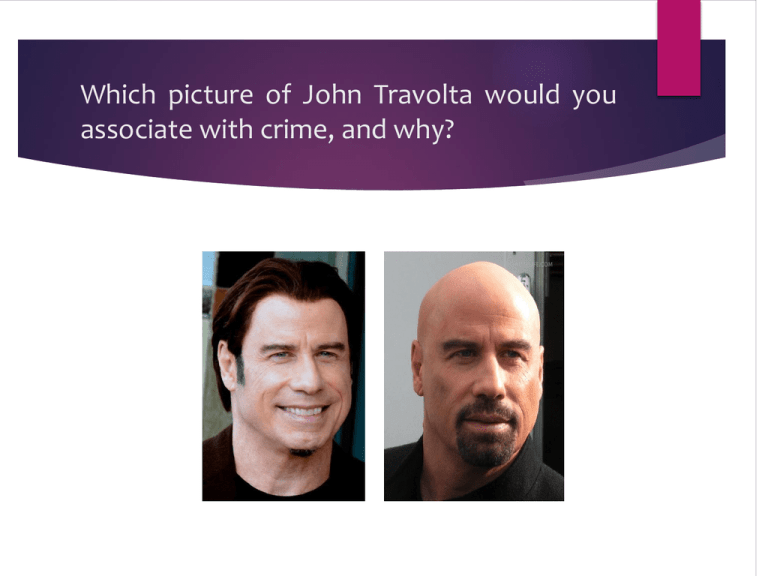
Which picture of John Travolta would you associate with crime, and why? Week 2 This week we will examine the effects of race, accent and appearance/attractiveness on decision making. Your key study this week is Sigall & Ostrove (1975). Race Ethnic minorities - 8% of UK’s population Ethnic minorities - 15% of UK’s prison population ‘Some’ research – [Extension h/w?] White jurors More likely to find black defendant guilty (in comparison to white). More likely to issue harsher sentences, for the same crime. Skolnick & Shaw (1997) found the opposite… Black and white jurors were less likely to find a black defendant guilty. Black jurors were more likely to find a white defendant guilty, in comparison to a black defendant. Accent If a defendant is well-spoken – less likely to be found guilty of crimes such as robbery. If the defendant has a strong regional accent (or rough accent), the reverse is true. This may be because ‘we’ see robbery as a ‘poor mans’ crime and therefore do not associate it with well-spoken individuals. Mahoney & Dixon (2002) – in a mock jury setting, found that people with Brummie accents, were more likely to be found guilty of armed robbery. Whereas, people with a posh accent were more likely to be found guilty of fraud. Attractiveness According to psychologists, attractive people are seen as more intelligent, friendly and honest. Taylor and Butcher (2007) – in a mock jury setting, found that attractive people were judged as less guilty of a crime and given lower sentences than unattractive people. Key Study Sigall & Ostrove (1975) Sigall & Ostrove (1975) - Aim Aim: Sigall & Ostrove had two aims: 1) To examine whether attractiveness affected jury decision making. 2) To examine whether there was a relationship between attractiveness and type of crime committed. 20 Questions… Now you know the aim of the experiment, try to work out the result of the study, by asking me questions. I will only answer ‘yes’ or ‘no’. Sigall & Ostrove (1975) - Method Method:120 participants were divided into 6 groups (20 per group). Each group were given a piece of card with a crime written on it and a photograph of Barbara Helms. Attractive photo, accused of burglary Unattractive photo, accused of burglary No photo, accused of burglary (control condition) Attractive photo, accused of fraud Unattractive photo, accused of fraud No photo, accused of fraud (control condition). Firstly, all of the participants were asked to rate how attractive Barbara was, to make sure they agreed with whether the photograph was attractive (groups 1 and 4) or unattractive (groups 2 and 5). The researchers then asked jurors (participants) to give Barbara a prison sentence ranging from 1-15 years. Sigall & Ostrove (1975) - Results The attractive photograph had a big effect on the participant’s decision. They thought she should spend longer in prison for fraud and less time in prison for burglary. Mean prison sentence (years) A similar length of sentence was awarded for both crimes, for both 6 Whatand donothese unattractive photo-results show? graph. 5 Sigall and Ostrove (1975) Results 5.45 5.2 5.1 4.35 4.35 4 3 2.8 2 1 0 Attractive Unattractive Burglary Fraud No photo Sigall & Ostrove (1975) - Conclusion The experiment highlights the importance of looks on jury decisionmaking. Good looking people do get away with some crimes, but if they use their looks to commit a crime, they are less likely to get away with it. Outline any strengths and weaknesses of Sigall & Ostrove (1975). Laboratory experiment – extraneous variables – good reliability Use of control group Repeated measures design – demand characteristics Lacks ecological validity Jurors don’t issue sentences
